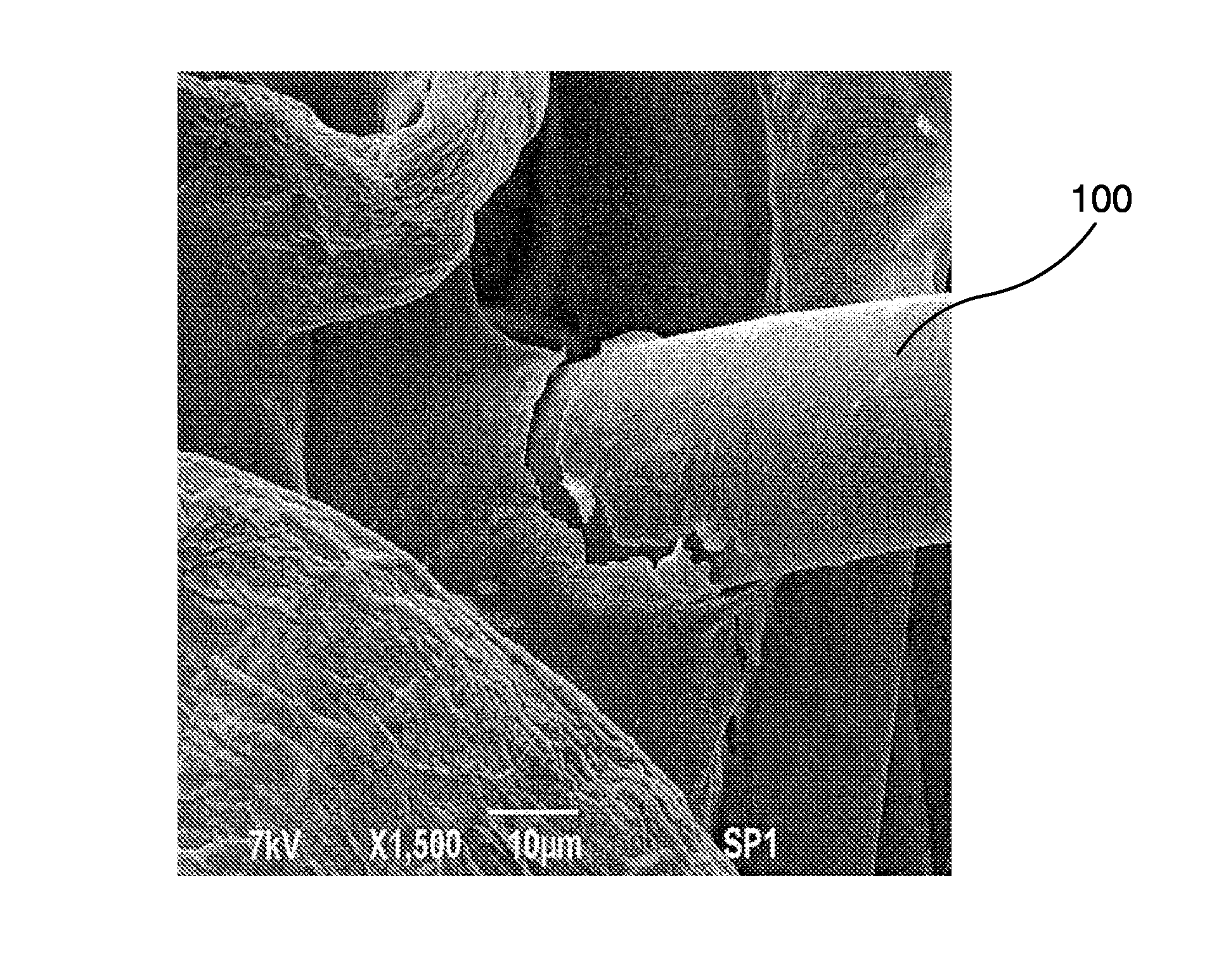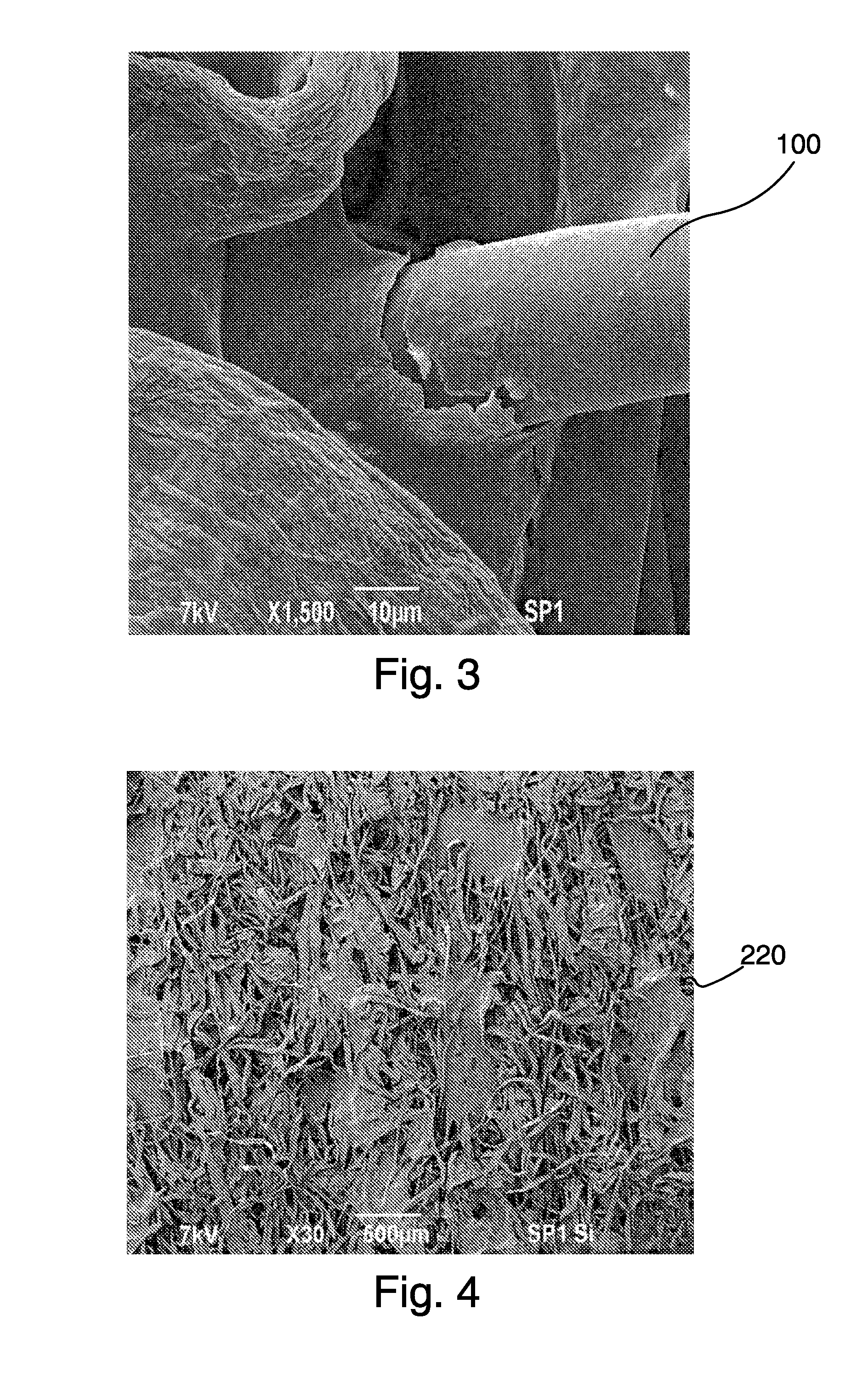Wipe Coated with a Botanical Composition having Antimicrobial Properties
a technology of botanical compositions and wipes, which is applied in the direction of wipes, biocide, disinfectants, etc., can solve the problems of limiting the effectiveness of most applications, many of the antimicrobial actives used in such wipes are undesirable, and suffer from significant problems, so as to inhibit the growth of bacteria
- Summary
- Abstract
- Description
- Claims
- Application Information
AI Technical Summary
Benefits of technology
Problems solved by technology
Method used
Image
Examples
example 1
[0083]A coating solution was initially prepared by adding 2.5 grams of soy protein isolates into 100 milliliters of distilled water. After 30 minutes of magnetic stirring, 2.5 grams of carvacrol was added to the mixture. The solution was homogenized at 7000 rpm for 10 minutes (ambient temperature) using a T.K. Homomoxer Mark II (Model 2.5), available from PRIMIX Corp. (Japan). The solution was coated onto HYRDOKNIT® substrates (25 cm2) by dipping it into the solution for 1 minute. Thereafter, the coated substrates were removed from the solution beaker and placed in hood to allow the solvent to evaporate off for 3 hours at ambient temperature. The resulting add-on level, after drying, was calculated to be 32% from the following equation:
Add-onlevel(wt%)=100×(wt.oftreatedsubstrate-wt.ofuntreatedsubstrate)wt.ofuntreatedsubstrate
[0084]The coated substrates were stored for subsequent testing in an open chamber at 40° C. for 1 day, 4 days, and 10 days.
example 2
[0085]A coating solution was initially prepared by adding 2.5 grams of soy protein isolates into 100 milliliters of distilled water. After 30 minutes of magnetic stirring, 2.5 grams of carvacrol was added to the mixture. 8 milliliters of a PDMS silicone emulsion (TM4855) was then added to the mixture. The solution was homogenized at 7000 rpm for 10 minutes (at ambient temperature) using a T.K. Homomoxer Mark II (Model 2.5), available from PRIMIX Corp. (Japan). The solution was coated onto HYRDOKNIT® substrates as described above. The resulting add-on level of the solution, after drying, was calculated to be 28% from the equation above.
[0086]The coated substrates were stored for subsequent testing in an open chamber at 40° C. for 1 day, 4 days, and 10 days.
example 3
[0087]Coated substrates were formed as described in Example 2, except that a hydroxyl-terminated PDMS emulsion (TM4856) was employed. The add-on level, after drying, was calculated to be 31% from the equation above. The coated substrates were stored for subsequent testing in a chamber at 40° C. for 1 day, 4 days, and 10 days.
PUM
| Property | Measurement | Unit |
|---|---|---|
| boiling point | aaaaa | aaaaa |
| boiling point | aaaaa | aaaaa |
| wt. % | aaaaa | aaaaa |
Abstract
Description
Claims
Application Information
 Login to View More
Login to View More - R&D
- Intellectual Property
- Life Sciences
- Materials
- Tech Scout
- Unparalleled Data Quality
- Higher Quality Content
- 60% Fewer Hallucinations
Browse by: Latest US Patents, China's latest patents, Technical Efficacy Thesaurus, Application Domain, Technology Topic, Popular Technical Reports.
© 2025 PatSnap. All rights reserved.Legal|Privacy policy|Modern Slavery Act Transparency Statement|Sitemap|About US| Contact US: help@patsnap.com



